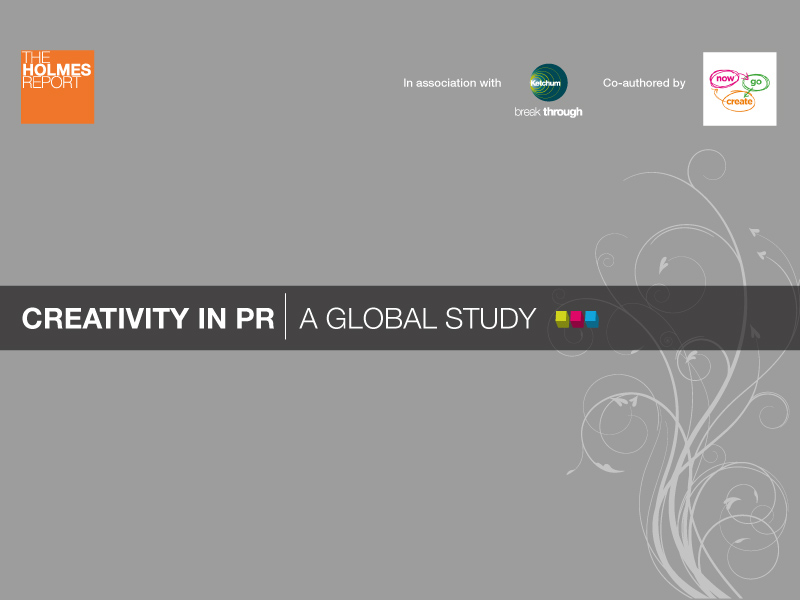Arun Sudhaman 16 Nov 2012 // 12:00AM GMT

NEW YORK--40 percent of in-house executives believe that their agencies could improve creatively, according to the Creativity in PR study.
The report is co-authored by the Holmes Report and NowGoCreate, in partnership with Ketchum, based on a survey of 650 PR people from more than 35 countries across the world.
The study forms part of the Holmes Report's new Creativity channel, which aims to celebrate, explore and analyse creativity in the public relations industry.
So far this week, we have examined:
- The big idea deficit that apparently plagues PR;
- The resourcing issues that are viewed as key barriers to a more creative industry
- Findings relating to working practices in the industry and the critical talent equation.
The client view
In-house executives, who accounted for around 38 percent of all survey respondents, were asked to score the importance of creativity in their hiring decisions out of 10. Over three-quarters scored 7 or above, and two-thirds opted for 8 or higher. For clients, then, it seems clear that creativity is a critical element in the decision to hire and retain agencies.
However, 40 percent of clients said that their agencies could do better when it came to their 16 percent were consistently happy with these capabilities, although only a quarter are not happy.
Agency creativity is most often assessed as part of client satisfaction reviews. 37 percent said that clients assess creative efforts sometimes or not at all.
Philips global communications head Andre Manning called Creativity in PR a "very important study in helping define a critical issue for the PR industry and my colleagues if we are to play an equal role in the marketing and business functions of our companies."
However, Manning voiced concern over several findings, noting that it reveals creativity is not being adequately recognised within the profession.
"Why is this the case?," asked Manning. "I think it is because the approach to generating big ideas, and hence creativity, is wildly mixed. When I work with my agency, OneVoice (led by Ketchum and Fleishman Hillard), we often methodically go through a process that begins with smart research, leads to insights which drive our strategy, and then we layer creative thinking onto a clear business-driven strategy."
"What we get is smart creativity that brings value to our business," continued Manning. "In essence, it’s when we connect our right brain with our left brain thinkers."
For Manning, therefore, the key is to marry creativity with a stronger insight process. Only around seven percent of our respondents agree with this contention, when asked for one thing that would improve their creative capabilities.
"If instead, we rush to come up with 'the big creative idea' and skip first unlocking data-driven and compelling insights, we can have results that do little toward our business strategy," said Manning.
"So, to close the gap in creativity this study shows, begin with research, generate insights that form a strategy, and then bring in the 'creatives'," he added. "The result is much more often a greater value associated with creativity and all the parts of communications planning that get you there."
“I always feel that PR people do not get more involved with brand related initiatives from the start," said an Indian in-house respondent to the survey. "They are brought in after the campaign idea is frozen and PR is seen as an additional value add, rather than part of the core process.”
Microsoft India corporate communications and citizenship director Meenu Handa, meanwhile, said the results demonstrated the need for public relations people to move beyond media relations.
"In many ways we have limited out own creativity by taking up too niche a space of influencer and media relations," said Handa. "Here is another chance for us to go out and stake a claim to bigger opportunities. We need to see ourselves as communication professionals that impact a wide set of publics. We need to focus on the end consumer or end result and not just the media and, I believe, creativity will follow."


































.jpg)































